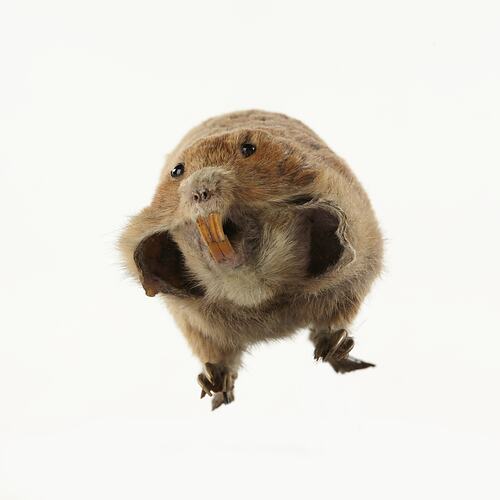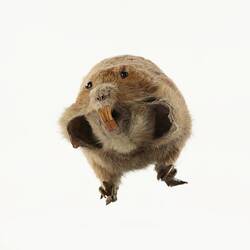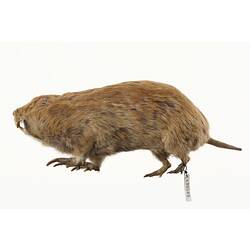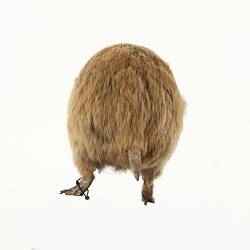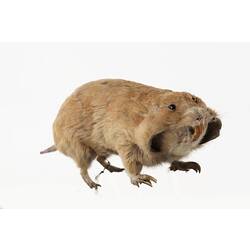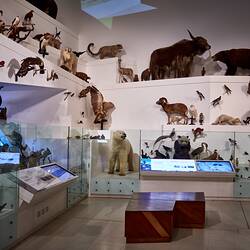Summary
The Plains Pocket Gopher is one of several dozen species of pocket gopher, a type of burrowing rodent. This species is common on the grasslands of the Great Plains of North America.
This specimen was purchased from the French naturalist, explorer and natural history dealer J P Verreaux and registered into the museum's collections in 1884. Exactly where in North America it was collected from is unknown.
The common name "gopher" comes from the French "gaufre" meaning honeycomb, a reference to the patterns of their burrows. The "pocket" part of the name comes from the fur-lined cheek pouches on the sides of the face. These are external to the mouth and extend from the face all the way back to the shoulders. This is unusual as the cheek pouches of most other rodents open into the mouth. The pocket gopher fills these pouches with food to eat later or store, or with material gathered for its nest. The pouches aren't held open as they have been displayed on this specimen and are usually not very visible. This species burrows using its specialised claws, its large teeth are used for eating roots and tubers.
The genus name Geomys comes from the Greek words for "earth" and "mouse" while the species name bursarius comes from the Latin "bursa" meaning pouch, referring to the cheek pouches that also give the common name.
Specimen Details
-
Taxon Name
-
Preferred Common name
Plains Pocket Gopher
-
Number Of Specimens
1
-
Sex
Unknown
-
Specimen Nature
Nature: Mount, Form: Dry
-
Collected By
Unknown
-
Category
-
Scientific Group
-
Discipline
-
Collecting Areas
-
Type of Item
Taxonomy
-
Kingdom
-
Phylum
-
Subphylum
-
Class
-
Order
-
Suborder
-
Family
-
Genus
-
Species Name
bursarius
Geospatial Information
-
Continent
